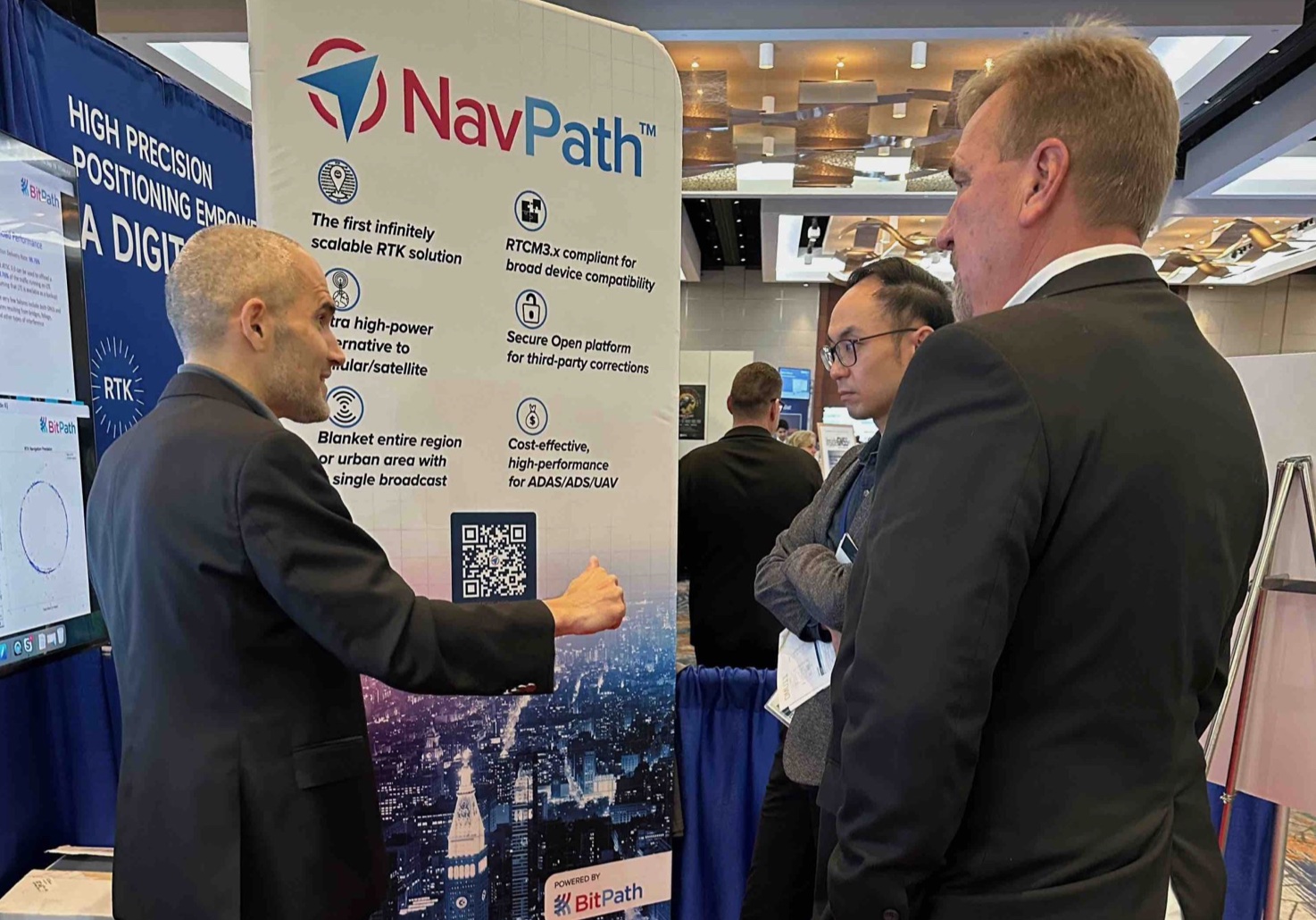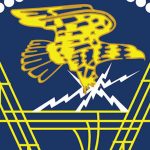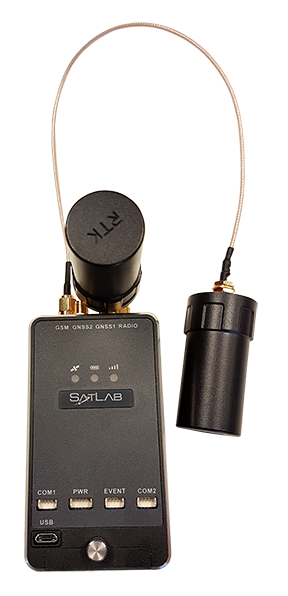BitPath is putting Real-Time Kinematic (RTK) base stations in high-power TV broadcast centers—giving users access to accurate, continuous RTK corrections data without a mobile data connection.
NavPath RTK corrections are broadcast at high power levels of up to 1 million watts from tall towers, BitPath President John Hane said, using heavy coding and error correction. This high-power transmission network makes it possible to deliver reliable corrections over metropolitan areas with low, stable latency.
Hane and his team announced NavPath at this year’s ION GNSS+ held in Baltimore, where they generated a lot of interest in the service.
While RTK corrections offer the most precision and fastest time to fix, the data provided is only good for a small area, Hane said. As you move away from the base stations, the value degrades. And with traditional RTK services that use mobile data plans, a continuous dedicated data session is required for each user. While RTK corrections can be sent via satellites to cover larger areas, it requires many base stations and “a lot of complex math.”
Precise Point Positioning (PPP) and PPP-RTK can transmit SSR data from satellites, which broadcast the same data over larger areas, Hane said, but they’re not as accurate or as fast to acquire as true RTK.
“If you have RTK available without paying a cellular provider for that data it’s almost always better,” Hane said. “But it’s not available on those terms all the time.”
In cities, for example, RTK corrections can be blocked by large buildings or trees, he said, as can PPP and PPP-RTK corrections. Because it’s being broadcast, NavPath’s UHF transmissions provide reliable service in dense urban areas. Millions of devices can access the service at once, without network slowdowns or high transmission costs.
Drones, autonomous vehicles, robots, public safety, construction and agriculture are among the devices and industries that can benefit from NavPath.
“We can service them all, 24/7, with RTK or any other form of corrections, and all this without 4G,” Hane said. “I worked in the TV and satellite business for years, so I knew this would work. It gives you an incredible transmission system. Cell systems have only a fraction of the power. Everyone can receive corrections and it never slows down.”






